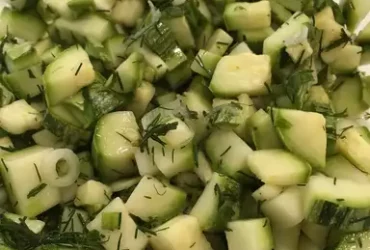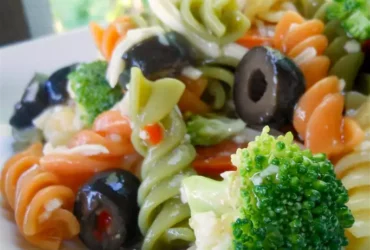Basic Ingredients
Rice Vinegar: The Foundation of Japanese Salad Dressing
Rice vinegar is a staple ingredient in many Japanese dishes, including salad dressing. Its unique flavor and properties make it an essential component in creating authentic-tasting Japanese salad dressings.
The acidity level of rice vinegar is what makes it so important in salad dressing. Unlike other vinegars such as apple cider or balsamic vinegar, which have a stronger flavor, rice vinegar has a mild taste that adds a delicate touch to the dressing without overpowering the other ingredients.
When using rice vinegar in salad dressing, it’s essential to note that the type of rice vinegar matters. There are several types of rice vinegar available, including seasoned rice vinegar and unseasoned rice vinegar. Seasoned rice vinegar has added flavorings such as sugar or salt, which can alter the taste of the dressing.
Unseasoned rice vinegar is preferred for most salad dressings because it provides a clean and neutral taste that won’t compete with other flavors in the dish. It also allows the cook to adjust the amount of seasoning to their liking without affecting the overall flavor profile.
In Japanese cuisine, the ratio of ingredients in salad dressing is carefully balanced to achieve a harmonious blend of flavors. The typical ratio for a basic Japanese salad dressing recipe using rice vinegar is 1 part rice vinegar to 2-3 parts vegetable oil or neutral-tasting oil.
This balance ensures that the acidity from the rice vinegar is tempered by the richness of the oil, creating a smooth and refreshing taste that complements the natural flavors of the vegetables. Additionally, some recipes may include other ingredients such as grated ginger, sesame seeds, or sugar to enhance the flavor of the dressing.
Soy Sauce: Depth and Umami Flavor
In any renowned Japanese restaurant’s kitchen, you’ll often find a pantry staple that elevates dishes to new heights – Soy Sauce. This liquid gold is not just a condiment but a fundamental component in creating depth and umami flavor profiles in various Asian cuisines.
Umami is the fifth taste, besides sweet, sour, bitter, and salty, which can be described as savory or meaty. It’s an essential element in many dishes, particularly those of Japanese origin. Soy Sauce, being a rich source of glutamates (the amino acids responsible for umami taste), plays a pivotal role in imparting this unique flavor dimension.
For those who are unfamiliar with the intricacies of Soy Sauce, it’s essential to understand that not all soy sauces are created equal. Japanese Soy Sauce (Shoyu) is distinct from Chinese Soy Sauce due to differences in production methods, ingredients, and aging processes.
A good-quality Soy Sauce should be brewed using fermented soybeans, roasted wheat, water, and salt. The longer fermentation time and more complex brewing process contribute to its depth of flavor and umami intensity. This careful craftsmanship is what sets Japanese Soy Sauce apart from other varieties.
When it comes to enhancing flavors in a Famous Japanese Restaurant-Style Salad Dressing Recipe, Soy Sauce’s versatility and umami potency make it an ideal addition. By combining Soy Sauce with other ingredients like rice vinegar, sesame oil, sugar, and grated ginger, you can achieve an authentic, savory flavor profile reminiscent of traditional Japanese cuisine.
To harness the full potential of Soy Sauce in your dressing, start by mixing it with rice vinegar in a 2:1 ratio. This basic combination provides a solid foundation for further enhancements. You may choose to add sesame oil and sugar to balance sweetness, while grated ginger adds an aromatic depth.
The key to mastering this salad dressing recipe is to strike the perfect harmony between Soy Sauce’s umami flavor and other ingredients. A delicate balance ensures that your dish doesn’t become too overpowering or one-dimensional. Feel free to experiment with different proportions of each component until you achieve the desired taste experience.
The Key to a Balanced Taste
Ponzu: A Traditional Japanese Citrus Juice
The Key to a Balanced Taste:
- Ponzu, a traditional Japanese citrus juice, holds the secret to creating an exquisite and balanced taste in salads, marinades, and sauces.
Understanding Ponzu:
- Ponzu is a classic Japanese condiment made from citrus juice, vinegar, and soy sauce. The name “ponzu” literally translates to “sour and salty.”
The Magic of Citrus:
- The foundation of ponzu is citrus juice, typically a combination of yuzu or sudachi citrus fruits. These citrus varieties have a unique flavor profile, with notes of grapefruit, lemon, and orange.
Creating the Perfect Balance:
- To craft an authentic Japanese-style ponzu, you need to strike a balance between sweet, sour, salty, and umami flavors. This delicate harmony is crucial in creating a harmonious taste experience.
The Classic Ingredients:
A traditional ponzu recipe typically includes:
- 1/2 cup citrus juice (yuzu or sudachi)
- 2 tablespoons rice vinegar
- 1 tablespoon soy sauce
- 1 teaspoon grated ginger
- Salt, to taste
The Art of Preparation:
- To prepare ponzu, simply combine the citrus juice, rice vinegar, and soy sauce in a bowl. Whisk gently until well combined, then stir in the grated ginger and salt.
Using Ponzu as a Marinade or Dressing:
- Ponzu is incredibly versatile and can be used as a marinade for grilled meats or vegetables, or as a dressing for salads and noodle dishes. Its acidity helps to break down proteins, while its umami flavor enhances the overall taste experience.
The Benefits of Ponzu
Using ponzu in your cooking offers several benefits: it adds depth and complexity to dishes, balances flavors, and enhances presentation. With its unique citrus flavor profile, ponzu is an excellent choice for those looking to add a touch of Japanese flair to their meals.
Cooking with Ponzu
Ponzu can be used in various ways, from dressing salads and marinades for grilled meats to adding it as a sauce for noodles or stir-fries. Its versatility makes it an essential condiment for any home cook looking to explore the world of Japanese cuisine.
Experimenting with Ponzu
Don’t be afraid to experiment and adjust the balance of flavors in your ponzu recipe to suit your taste preferences. Try using different types of citrus fruits or adding other ingredients like garlic, sesame oil, or chili flakes to create unique flavor combinations.
In Conclusion
Ponzu is an authentic Japanese condiment that offers a balanced and harmonious taste experience. With its rich history, versatility in use, and ability to enhance presentation, ponzu is an essential ingredient for any home cook looking to explore the world of Japanese cuisine.
Sugar and Salt: Enhancing the Flavors
The key to achieving a balanced taste in any dish, including salad dressings, lies in the harmonious combination of three fundamental flavor enhancers: sugar, salt, and acidity.
Sugar serves as the primary sweetener in many recipes, providing a subtle yet essential depth of flavor. It balances out the bitterness or sourness present in certain ingredients like vinegar, lemon juice, or green tea extract commonly found in Japanese cuisine.
However, sugar alone cannot provide enough structure to create an engaging taste experience. This is where salt comes into play – its primary function being to elevate and enhance flavors by reducing bitterness and bringing out sweetness.
A perfectly balanced ratio of sugar and salt is crucial for a delicious and refreshing Japanese restaurant-style salad dressing. The ideal balance varies depending on personal preferences but generally consists of a 1:2 or 1:3 sugar-to-salt ratio.
For instance, in the famous Japanese-style teriyaki sauce recipe, a combination of 10 grams of sugar and 30-40 grams of salt will create an excellent base flavor profile. This balance ensures that the sweetness of the sugar doesn’t overpower the dish, while also preventing the harshness often associated with high salt levels.
In addition to these essential pairings, acidity plays a vital role in rounding out flavors and creating a harmonious taste experience. Acidity, usually introduced through vinegar, citrus juices or pickled ingredients like ginger and daikon radish, adds brightness to the dish while cutting through richness and balancing out the savory aspects.
In summary, achieving a well-balanced Japanese restaurant-style salad dressing involves combining sugar, salt, and acidity in harmony. By carefully adjusting these fundamental flavor enhancers according to your taste preferences and recipe specifications, you can create a delicious and refreshing condiment that complements the natural flavors of your ingredients while elevating their overall impact.
Adding a Touch of Japan to Your Salad
Grated Ginger and Green Onions for Extra Flavor
To add a touch of Japan to your salad, you can incorporate two key ingredients that are commonly used in traditional Japanese cuisine: grated ginger and green onions. These components not only contribute to the visual appeal but also elevate the flavor profile of your dish.
Here’s how you can use these ingredients:
Grated Ginger:
- Grate a small piece of fresh ginger using a fine grater or the microplane.
- Mix it into your salad dressing along with other ingredients, such as soy sauce, rice vinegar, and sesame oil.
Green Onions:
- Fine-chop the green onions or use a scissor to cut them into thin strips.
- Add them on top of your salad before serving, allowing their crunchy texture and onion flavor to complement the other ingredients.
When using grated ginger in your salad dressing, start with a small amount (about 1 teaspoon per cup) and adjust according to taste. The key is to strike a balance between the subtle sweetness of the ginger and the other flavors in the dressing.
Incorporating green onions into your salad is quite simple:
- Add the chopped or thinly sliced green onions on top of your salad just before serving, allowing their fresh flavor to shine through.
- Alternatively, you can mix the green onions into the salad along with the dressing if desired for an added onion flavor and crunchy texture.
The combination of grated ginger and green onions in your Japanese restaurant-style salad will add a unique touch to any meal. You can experiment with different variations by incorporating other ingredients commonly found in traditional Japanese cuisine, such as sesame seeds, pickled ginger, or wasabi mayonnaise for added depth and flavor.
Suggested Ratios for Customization
To add a touch of Japan to your salad, you can try incorporating traditional Japanese ingredients and flavors into your dressing. Here are some ideas:
Japanese Ingredients
- Sesame oil or sesame seeds for added nuttiness
- Miso paste for a savory, umami flavor
- Rice vinegar for a mild acidity and depth
- Grated ginger for an extra kick of spice
- Soy sauce or tamari for a salty, savory flavor
Suggested Ratios for Customization
- Miso paste and soy sauce: 1 tablespoon miso to 2 tablespoons soy sauce (adjust to taste)
- Rice vinegar and sesame oil: 2 tablespoons rice vinegar to 1 tablespoon sesame oil (start with a smaller amount of sesame oil and adjust to taste)
- Grated ginger: start with a small amount (about 1/4 teaspoon) and adjust to taste
Tips for Balancing Flavors
- Start with a basic vinaigrette recipe and add Japanese ingredients incrementally, tasting as you go
- Adjust the ratio of sweet to savory to umami flavors to suit your taste preferences
- Consider adding other Asian-inspired ingredients, such as chopped scallions or grated daikon radish
Sample Recipe
Miso-Honey Vinaigrette:
- In a blender or food processor, combine 1 tablespoon white miso paste, 2 tablespoons honey, and 2 tablespoons rice vinegar
- Add 1/4 teaspoon grated ginger and blend until smooth
- With the blender running, slowly pour in 1/2 cup vegetable oil through the top
- Transfer the dressing to a bowl and whisk in 2 tablespoons soy sauce
This is just one example of how you can add a touch of Japan to your salad. Feel free to experiment with different ratios and ingredients to create a flavor that suits your taste preferences!
- Best Datanyze Alternatives for 2025 - April 24, 2025
- Best Hunter.io Alternatives for 2025 - April 22, 2025
- Best Lead411 Alternatives for 2025 - April 22, 2025















